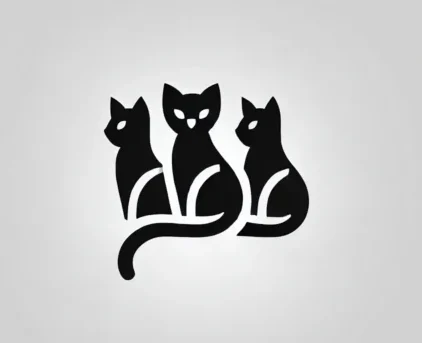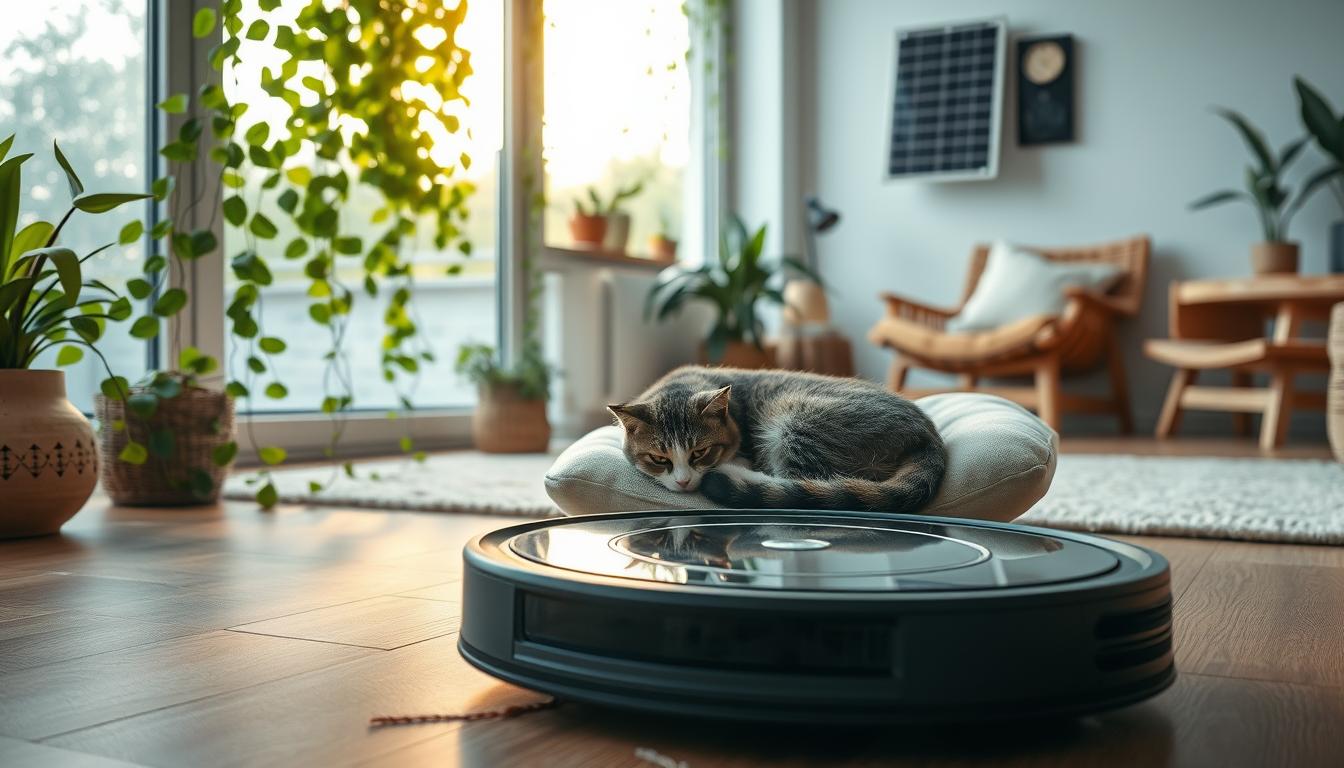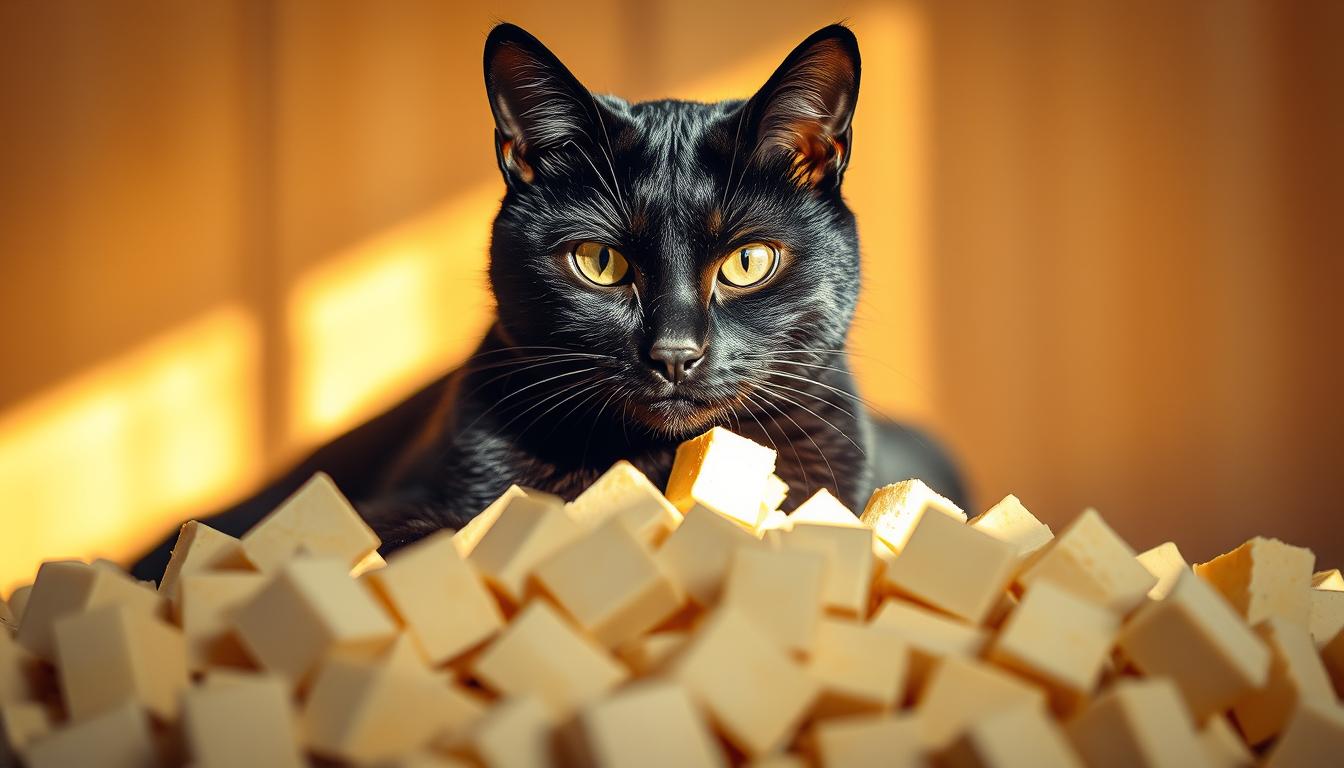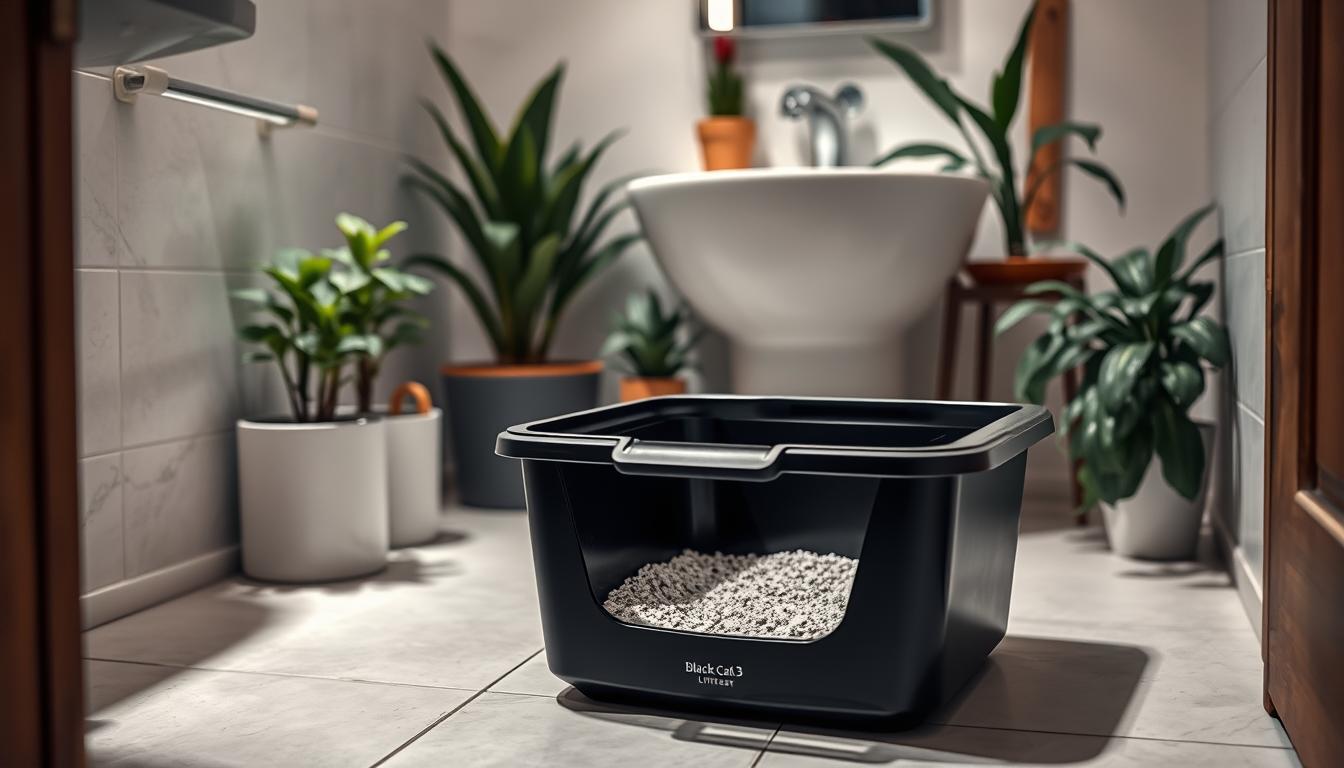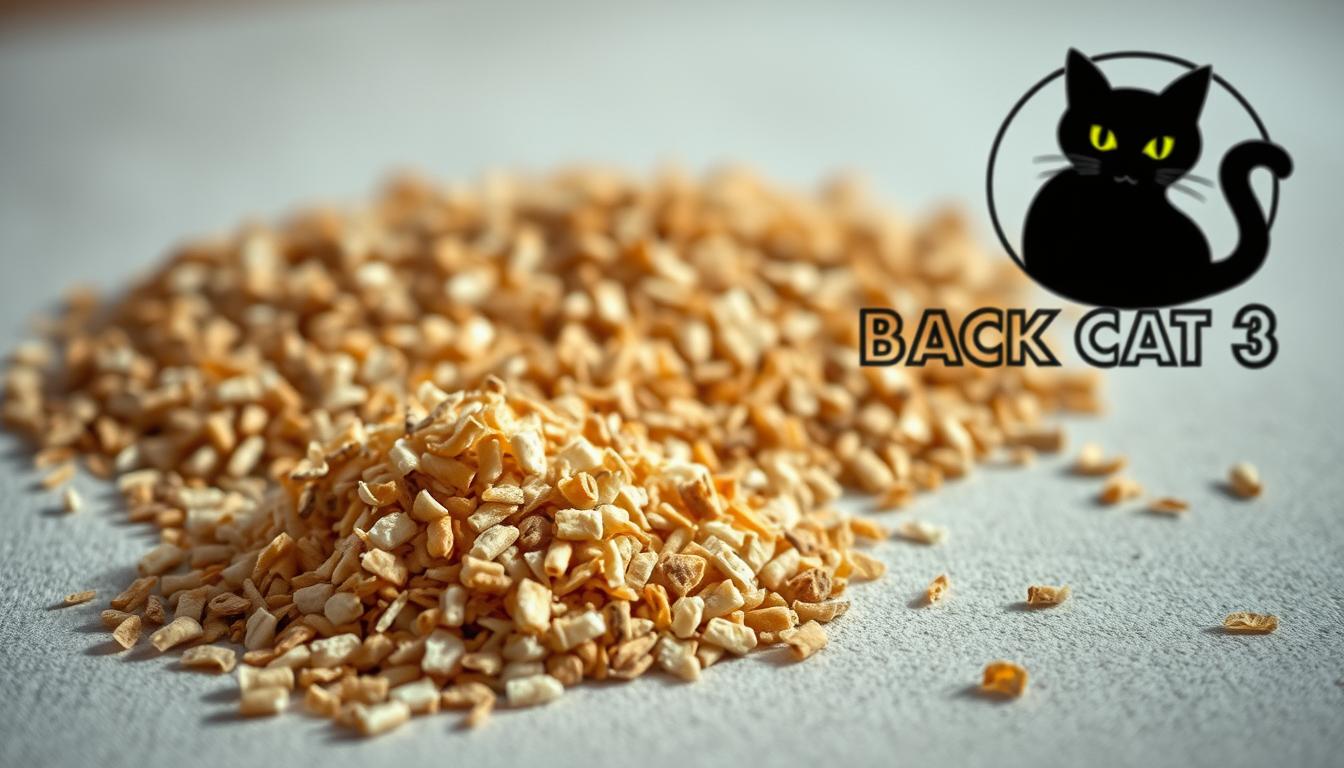Imagine a cozy afternoon with your purring companion curled beside you. The sun filters through the window, casting warm light on their playful paws. Now picture that same world thriving—cleaner, greener, and safer for every whisker and leaf. That’s the heart of caring for both our pets and the planet.
This guide is a journey, one where small choices add up to big changes. Think of reusing old toys instead of buying new ones, or choosing biodegradable litter. Every action matters, like planting cat-safe herbs or donating unused supplies. It’s not about perfection—it’s about love for our furry friends and the places they explore.
Parents and kids alike can discover fun, simple ways to make a difference. From crafting eco-friendly toys to conserving water during playtime, these ideas blend kindness to cats with care for the environment. Together, we can create a future where paws and plants flourish side by side.
Key Takeaways
- Small eco-friendly changes benefit both cats and the planet
- Reusing items reduces waste without sacrificing pet happiness
- Safe, natural materials protect cats and ecosystems
- Families can work together on green pet care habits
- Every action contributes to a healthier world for future generations
Introduction to Cat-Friendly Sustainability
Every time a cat purrs, it’s a reminder of the connections we share with nature. Our furry friends rely on us for food, play, and care—choices that ripple outward into the world. From the ingredients in their meals to the toys they chase, each decision shapes their health and the planet’s future.
Understanding the Eco Impact of Pet Ownership
Cat food production creates more carbon emissions than you might think. A 2021 study found that pet food accounts for nearly 1% of global agricultural emissions. Choosing brands with eco-certifications can lower this impact.
Even small items like plastic toys add up. Over 80% of cat accessories end up in landfills. Switching to biodegradable litter or recycled materials helps reduce waste mountains.
Why Sustainable Choices Matter for Cats and the Planet
Natural, non-toxic products keep cats safer while protecting waterways. For example, clay-based litters often contain silica dust linked to respiratory issues. Plant-based alternatives avoid these risks.
Families can make a big difference through simple swaps. Here’s how traditional and eco-conscious choices compare:
| Traditional Choice | Eco-Friendly Swap | Benefit |
|---|---|---|
| Plastic food bowls | Bamboo or stainless steel | Reduces microplastic exposure |
| Chemical cleaners | Vinegar-water solutions | Safer for paws and floors |
| Mass-produced treats | Locally sourced fish snacks | Cuts transportation emissions |
Every change matters, like fixing torn beds instead of replacing them. These steps protect curious noses from harsh chemicals while keeping forests and oceans cleaner. Together, we create safer homes for cats and healthier ecosystems for all.
Innovative DIY Projects for a Greener Kitty Habitat
What do empty boxes, old socks, and paper rolls have in common? They’re secret treasures waiting to become your cat’s new favorite playthings. Transforming everyday items into pet adventures saves money, reduces waste, and sparks creativity.
The Amazon Box Glow-Up
That delivery box doesn’t belong in the recycling bin yet! Cut two entry holes in opposite sides. Stack smaller boxes inside like rooms. Add crumpled paper balls as “prey” for batting practice. Watch whiskers twitch as your cat explores their custom castle.
DIY Cat Toys and Treasures
Turn mismatched socks into crinkle toys. Stuff them with:
- Dried lavender (calming scent)
- Crinkled paper scraps
- Organic catnip
Secure the ends with cotton string. Paper towel tubes become treat puzzles—poke holes, fill with kibble, and let paws push snacks out. These projects teach kids how materials get second lives while keeping cats entertained for hours.
Upcycled play zones satisfy natural instincts to climb and hunt. Best part? When toys wear out, simply compost or recycle them. Families create memories while helping the planet—one purr at a time.
Sustainable Litter and Waste Management
What happens to all those clumps of litter after they leave the box? Traditional clay-based options often come from strip-mined earth and take centuries to break down. Eco-conscious choices keep paws clean while protecting forests and waterways.
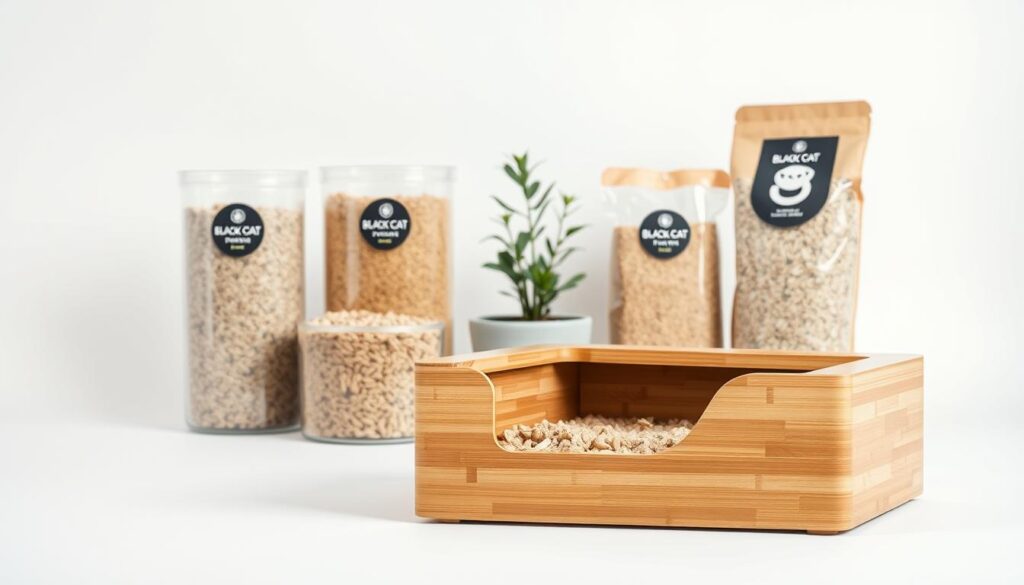
Eco-Friendly Litter Alternatives
Paper pellets, sawdust shavings, and corn kernels now replace dusty clay. These plant-based options absorb odors just as well—without harmful silica dust. “Switching was easier than I thought,” shares Mia, a cat parent from Oregon. Top picks include:
- Recycled newspaper litter (lightweight and low-tracking)
- Walnut shell granules (natural odor control)
- Wheat-based clumping litter (flushable and biodegradable)
Proper Waste Disposal Practices
Plastic bags trap waste in landfills for 1,000 years. Compostable bags made from cornstarch break down in months. Always check local rules—some areas allow burying biodegradable litter in gardens.
| Material | Decomposition Time | Best For |
|---|---|---|
| Plastic bags | 1,000+ years | Not recommended |
| Cornstarch bags | 3-6 months | Eco-conscious homes |
| Paper wrappers | 2-5 weeks | Quick disposal |
One family in Texas reduced their pet waste by 60% using plant-based litter and reusable scoops. Small changes create cleaner neighborhoods—where cats can safely explore and nature thrives.
Cat-friendly Sustainability: Eco-Conscious Pet Supplies and Cleaning
Sunlight streams through the windows, catching dust motes in its glow—but what if that sparkle came from clean surfaces instead of chemicals? Many everyday products hide harsh ingredients that harm both pets and ecosystems. Simple swaps create safer spaces where curious paws won’t find trouble.
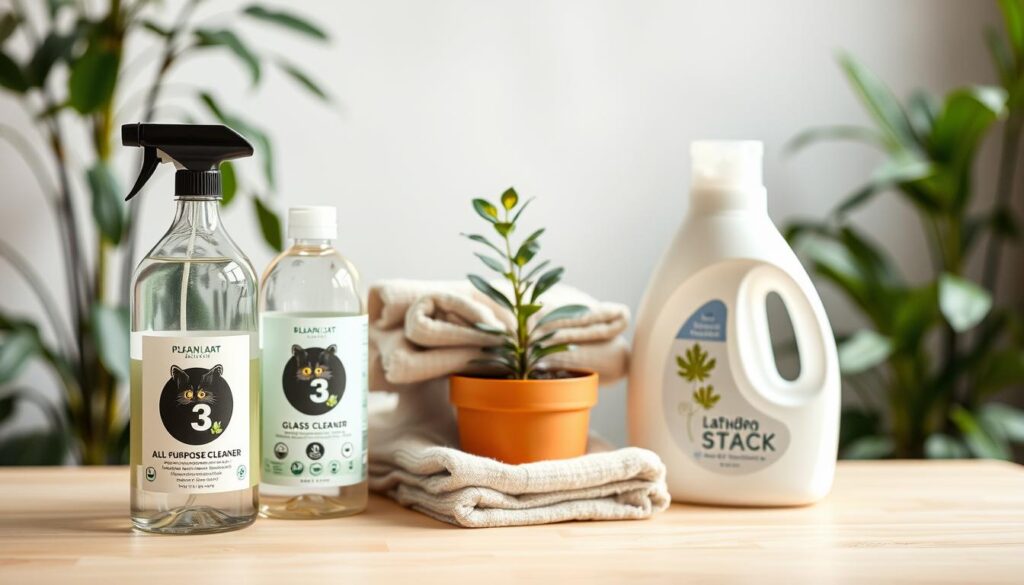
Green Cleaning Solutions for Your Home
White vinegar and baking soda become superheroes in eco-friendly practices. Mix one part vinegar with three parts water for a streak-free window cleaner. Sprinkle baking soda on carpets before vacuuming to neutralize odors. “My cat stopped sneezing after we switched,” notes a parent from Colorado.
Common items outperform toxic sprays:
| Problem | Natural Fix | Benefit |
|---|---|---|
| Sticky paw prints | Lemon juice + olive oil | Shiny floors, safe for licking |
| Litter box odors | Activated charcoal | Absorbs smells naturally |
| Flea prevention | Diatomaceous earth | Non-toxic pest control |
Choosing Environmentally Friendly Pet Supplies
Look for brushes made from recycled plastic or bamboo feeding bowls. Many brands now use compostable packaging for treats and toys. Check labels for certifications like USDA Organic or Leaping Bunny.
When shopping, ask:
- Is this product refillable?
- Can the container be recycled?
- Are materials locally sourced?
A family in Michigan reduced their plastic waste by 40% using bulk food bins and reusable storage jars. Small changes in practices protect waterways while keeping homes fresh—proof that green choices leave everyone breathing easier.
Sustainable Feeding Options for Your Feline
The soft crunch of kibble hitting a bowl signals mealtime joy for cats everywhere. But those tasty bites carry hidden costs—pet food production creates 64 million tons of greenhouse gases yearly. Choosing the right brands helps our furry friends thrive while protecting forests and oceans.
Selecting Eco-Friendly Cat Food Brands
Look for companies using upcycled ingredients or renewable resources. “Our cat’s new diet cut our carbon pawprint by 30%,” shares a California pet parent. Three standout options:
- Open Farm: Sources human-grade meats from ethical farms
- Weruva: Uses 100% recyclable packaging with ocean-safe inks
- Castor & Pollux: Certified organic recipes with regeneratively grown crops
Traditional cat food often contains corn syrup and artificial colors. Compare popular choices:
| Traditional | Eco-Friendly | Benefit |
|---|---|---|
| Beef-based | Insect protein | Uses 90% less water |
| Plastic bags | Compostable pouches | Breaks down in 12 weeks |
| Generic fish | MSC-certified seafood | Protects ocean life |
Switching food doesn’t mean compromising taste. Mix new eco-friendly options with familiar meals during transitions. One bowl at a time, we nourish both pets and the planet.
Creative Upcycling and Eco-Chic Furniture for Your Kitty
Old bookshelves and dressers hold secret lives as playgrounds for curious paws. With a little imagination, worn-out furniture becomes cozy hideouts that delight cats and reduce household waste. These projects turn forgotten items into treasures while teaching families about resourcefulness.
Transforming Old Furniture into Cat Condos
A chipped desk becomes a three-story kitty castle. Remove drawers to create cubbies, then wrap legs with sisal rope for scratching posts. Add soft cushions from old sweaters in upper levels. “Our cat naps there more than on her bed,” laughs a Minnesota pet parent.
| Material | New Use | Benefit |
|---|---|---|
| Wooden ladder | Climbing tower | Strengthens claws naturally |
| Cardboard boxes | Tunnel system | Encourages play |
| Fabric scraps | Window hammock | Reuses leftover materials |
Planting a Cat Garden for Natural Treats
Small pots of cat-friendly greens offer fresh snacks and cleaner air. Start with organic soil in recycled containers. Choose plants like:
- Catnip (stimulates play)
- Wheatgrass (aids digestion)
- Spider plants (safe for nibbling)
Place the garden where sunlight streams through windows. Animals enjoy watching leaves sway while sniffing earthy scents. This choice brings nature indoors, creating peaceful moments for pets and people alike.
Conclusion
A cat’s playful leap after a sunbeam mirrors our own power to reach for better habits. Every recycled toy, plant-based litter choice, and upcycled cat tree forms stepping stones toward a brighter world. Small actions create big waves—like choosing biodegradable waste bags or mixing homemade cleaners.
Families hold the key to protecting both furry friends and green spaces. Swapping plastic bowls for bamboo ones reduces ocean pollution. Picking food brands that use eco-friendly packaging keeps landfills lighter. These options show love for pets while caring for the environment.
Remember: a healthy planet means safer homes for all creatures. When we make sure our choices match our values, cats thrive alongside forests and rivers. Simple changes—like repairing torn beds instead of buying new—teach kids about resourcefulness.
Together, we shape an industry that values paws and pine trees equally. Every household’s effort adds up to cleaner air and happier humans. Let’s keep learning, growing, and choosing alternatives that leave soft pawprints on the Earth. The difference starts with one purr, one reusable toy, one hopeful heart at a time.
